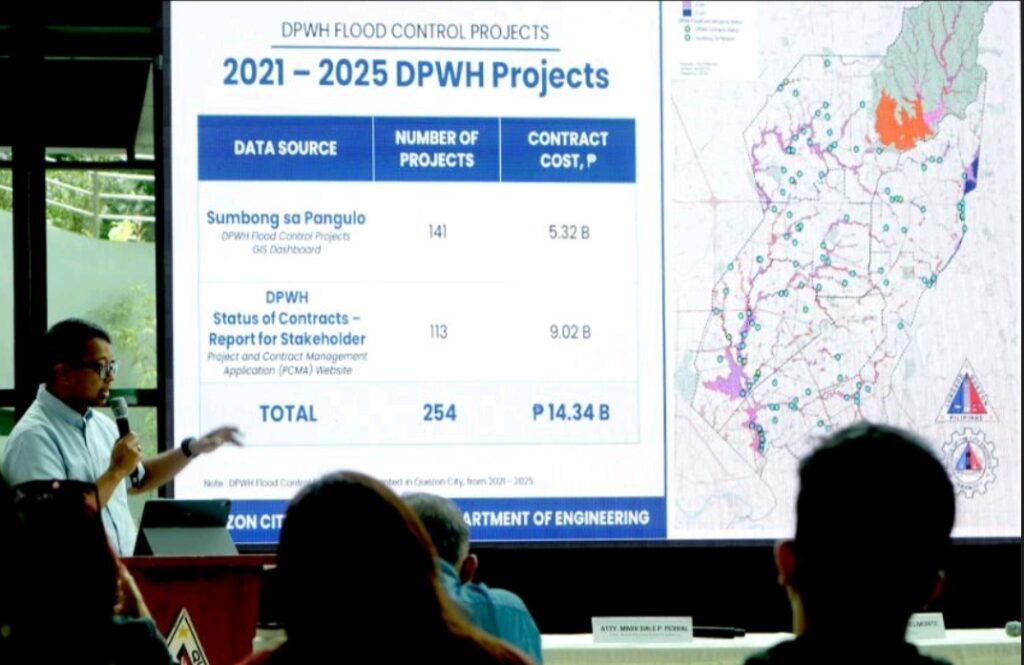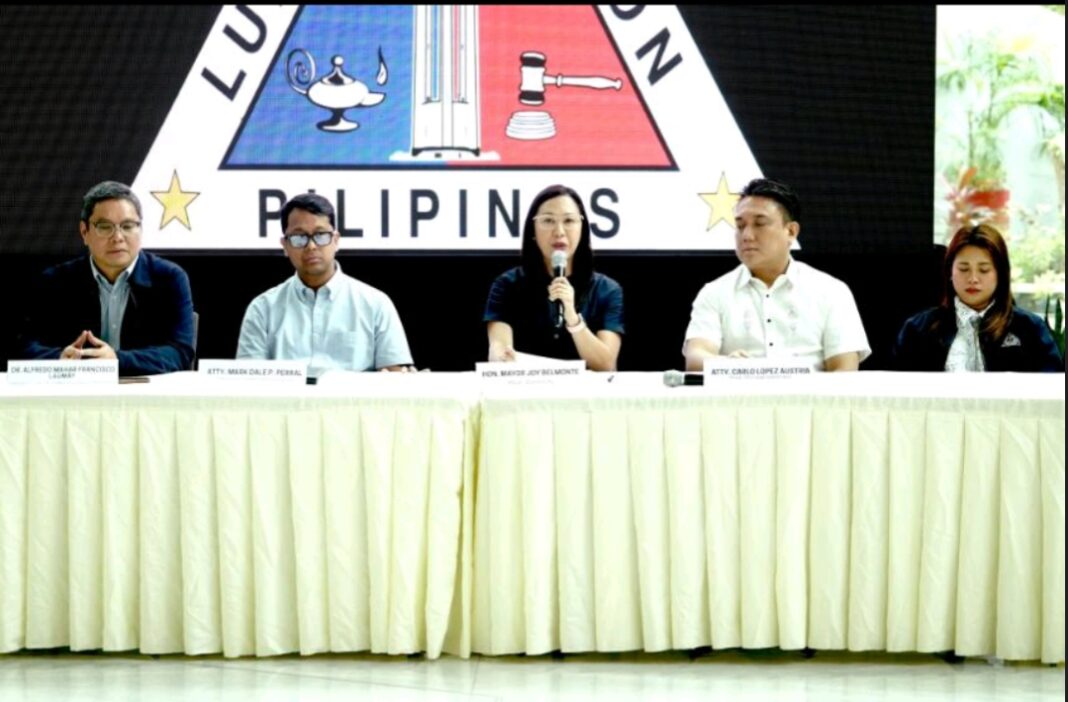By Perfecto T. Raymundo, Jr.
QUEZON CITY — The Quezon City Government on Friday (Aug. 29) revealed its critical findings on the inspection of DPWH (Department of Public Works and Highways) flood control projects in the city.
In a press conference, Mayor Ma. Josefina “Joy” G. Belmonte said that they would like to help in the investigations ordered by President Ferdinand R. Marcos, Jr.

Belmonte cited the City Ordinance which mandates the public consultation on matters of public works projects in the city.
In 2023, Belmonte said, the Drainage Plan was completed and it was immediately turned over to the DPWH. She cited that 8.4% of the projects were approved and only 2 were flood control projects.
She noted that many QCitizens did not know that there were flood control projects being done by the DPWH.
There were 141 flood control projects, and another 113 projects in the Department of Engineering from the reports of barangays and residents themselves.
There were 254 flood control projects amounting to more than P14 billion. There were projects declared as completed but when inspected turned out to be still ongoing projects.
“We hope that we will still receive more reports as we monitor and inspect the projects,” she said.
“We aim to hold accountable the involved people liable for graft and corruption,” she added.
Belmonte cited the Matalahib Pumping Station. It was agreed upon that the project will not anymore be pushed through. There was already a clearance from DPWH Sec. Manuel Bonoan on what to do with the project.
“We call on QCitizens if there are projects in your area which are not compliant with government standards. The people should be at the core of all our actions,” Belmonte said.
“I feel angry. I feel frustrated because the city government is disrespected,” Belmonte said.
However, Belmonte said that the city government is not yet sure whether or not these projects were initiated by the DPWH or the congressmen.
“Yes, I am convinced that there are anomalous projects,” Belmonte said.
Belmonte has tried to reach out to Bonoan but the Secretary has yet to see the Mayor.
Belmonte has held meetings with the District Engineering 4 and the DPWH Regional Director about the DPWH projects in Quezon City.
“The DPWH is now willing to stop the three pumping stations worth P300 million,” Belmonte said.
“I believe that the huge amount wasted on these projects should have been spent in disaster resiliency,” she added.
“We are crowdsourcing. We are getting feedback from the QCitizens,” Belmonte said.
“We are calling on lawmakers to fasttrack the coordination and cooperation in the local government units to strengthen flood control projects,” she added.
City Engineer Atty. Dale Perral said that they inspected flood control projects as ordered by Mayor Belmonte.
Perral cited Quezon City Ordinance, noting that Quezon City has two DPWH District Engineering Offices.
From 2021-2025, the DPWH projects implemented in Quezon City, only 315 were actually presented, or 19% and out of 315 projects, only 138 or 8.4% were approved by the City Government with certificate of coordination.
On the Sumbong sa Pangulo website, there are 254 DPWH flood control projects amounting to P14.34 billion.
“If only there was prior coordination in planning and design, there could have been sharing of data for the comprehensive plan and master plan,” Perral said.
There are 142 total projects, not 141. District 4 has the most number of sources at P4.8 billion.
Matalahib Creek Pumping Station with P95,998,547.00, and Mariblo Pumping Station were disapproved.
161 projects were inspected for verification, 93 inspected projects, 43 projects verified on site as completed.
138 projects are scheduled for inspection.
There are 16 projects with identical contract amount.
Certain flood control projects have too many phases with no clear delineation.
7 out of the top 15 contractors of flood control projects in the Philippines have contracts implemented in Quezon City. Only two are flood control projects and they are ongoing projects.
Without the certificate of coordination, the projects are still being pushed, which violate the existing policies.
There are 16 identical contracts and 25 contract costs.
“So far, we have not yet approved any pumping station project and it’s more on retention walls,” Perral said.
The study on the 93 projects is still ongoing.
Aside from the 66 phases, there are also no limits.
There are red flags, but it’s not conclusive.
The retaining wall projects are still ongoing.
Alpha and Omega is working on the Rehabilitation of the San Juan River.
Dr. Alfredo Mahar Francisco A. Lagmay, Executive Director of UP Resilience Institute and NOAH Center, said that local governments are central in disaster management.
Dr. Lagmay said that the analysis on whether or not government projects matter should be science-based and data driven.
Project Noah was launched in 2012 and it’s now adopted by the UP Resilience Institute.
He cited that once every 180 years or 1/180 years deluge happens but big floodings have become more frequent because of climate change.
The drainage master plan should be based on simulation of the flood control structure.
The water tributaries are interconnected by the drainage network.
Local government units are central to disaster resiliency. The problem is huge because creeks, rivers, and streams are everywhere.
Quezon City is the biggest city in Metro Manila where the flood control program and drainage master plan should be science-based and data driven that can be replicated nationwide.
Dr. Lagmay stressed that the P350 billion should be spent on flood mitigation projects and programs rather than on dike projects.
City Legal Officer Atty. Carlo Austria said that there were violations of the City Ordinance.
Austria added that there are violations of the local ordinance. ###







